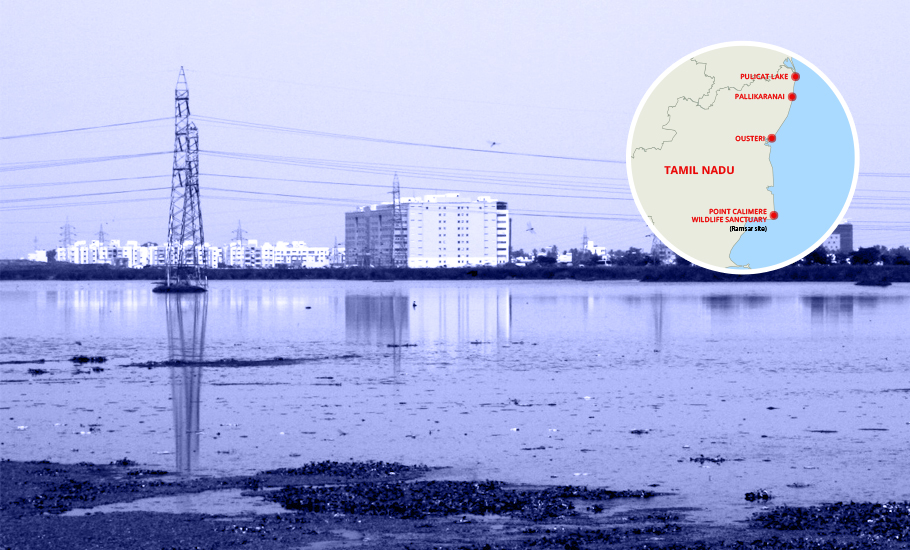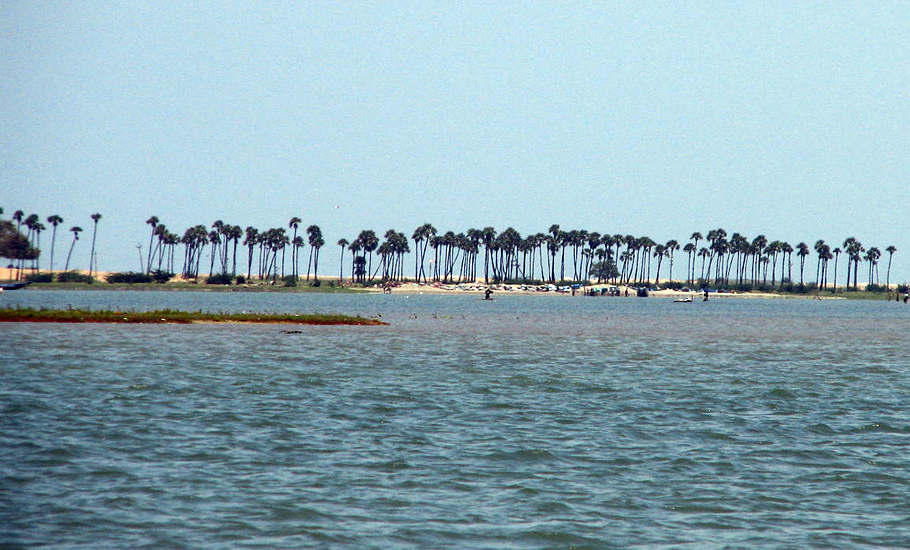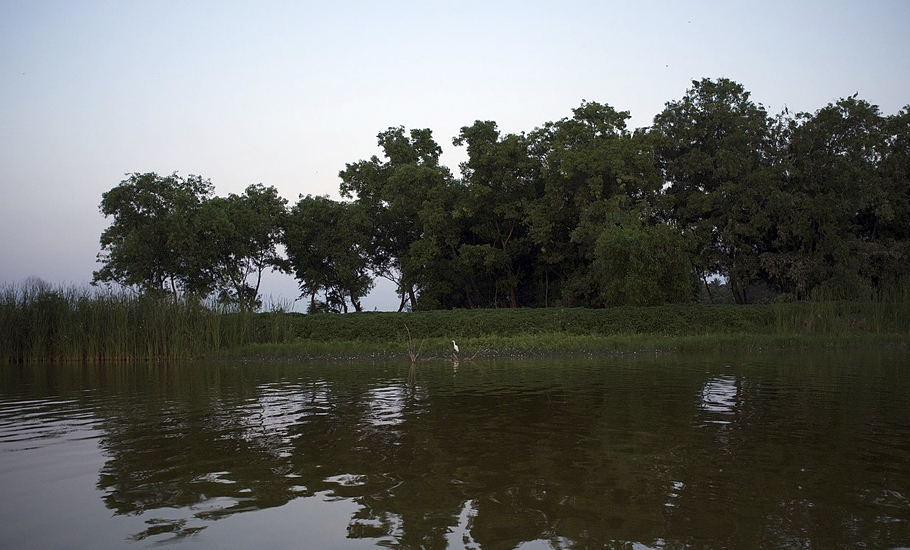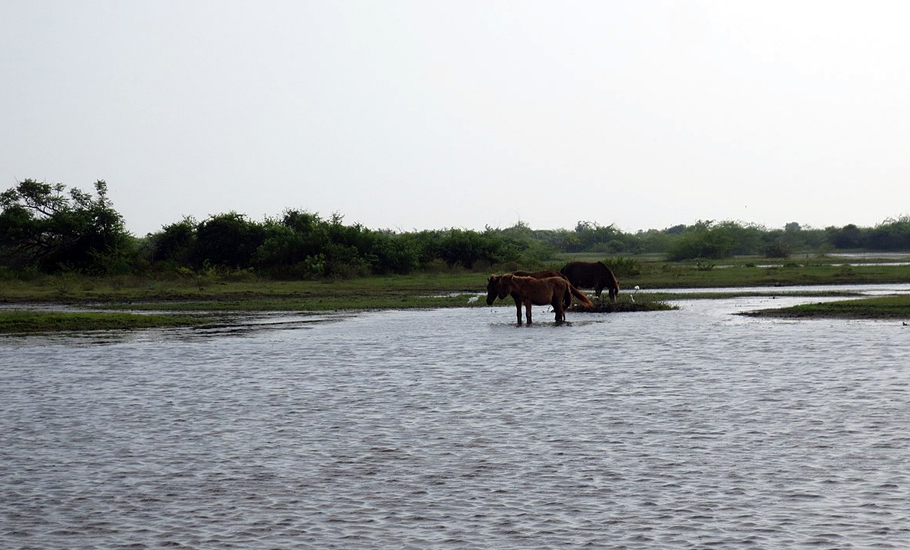
- Home
- News
- Analysis
- States
- Perspective
- Videos
- Education
- Entertainment
- Elections
- World Cup 2023
- Features
- Health
- Business
- Series
- Economy Series
- Earth Day
- Kashmir’s Frozen Turbulence
- India@75
- The legend of Ramjanmabhoomi
- Liberalisation@30
- How to tame a dragon
- Celebrating biodiversity
- Farm Matters
- 50 days of solitude
- Bringing Migrants Home
- Budget 2020
- Jharkhand Votes
- The Federal Investigates
- The Federal Impact
- Vanishing Sand
- Gandhi @ 150
- Andhra Today
- Field report
- Operation Gulmarg
- Pandemic @1 Mn in India
- The Federal Year-End
- The Zero Year
- Premium
- Science
- Brand studio
- Home
- NewsNews
- Analysis
- StatesStates
- PerspectivePerspective
- VideosVideos
- Entertainment
- ElectionsElections
- Sports
- Loading...
Sports - Features
- BusinessBusiness
- Premium
- Loading...
Premium

Wetlands as wealth, not waste: How TN, Puducherry are fighting for Ramsar tag
Wetlands are widely recognised as important wildlife habitats and as being among the most biologically productive and biologically diverse habitats on the planet.

“Munna Nagarathukula Nathikal Odala, Nathikal Suthi Thaan Nagaram Valandhuchu Mazha Thanniya Kaaththirundha Yaeriku Poromboke’nu Peyar Irundhuchu” This Tamil song ‘Poromboke’ by classical singer TM Krishna, released as part of the ‘Save Ennore Creek Campaign’ in 2017, was to create an awareness about the wetlands in north Chennai. The line literally translates to: “In...
“Munna Nagarathukula Nathikal Odala, Nathikal Suthi Thaan Nagaram Valandhuchu
Mazha Thanniya Kaaththirundha Yaeriku Poromboke’nu Peyar Irundhuchu”
This Tamil song ‘Poromboke’ by classical singer TM Krishna, released as part of the ‘Save Ennore Creek Campaign’ in 2017, was to create an awareness about the wetlands in north Chennai.
The line literally translates to: “In ancient times, there were no rivers running within the city, but the cities developed on the banks of rivers. Then, the lakes which saved the rainwater was called as ‘poromboke’.”
While the city lost many lakes to urbanisation, many others were left idle and turned into wastelands. From its ancient meaning of ‘poromboke’, the word has travelled a long way and is now mostly used as a pejorative term to indicate a person as ‘useless’.
The song, it is claimed, was born out of an anger over people’s ignorance about wetlands and treating them as wastelands. Four years since, the public is more aware of wetlands and its importance, but not the government officials or corporates.
The recent public agitation against the extension of Kattupalli port in north Chennai by Marine Infrastructure Developer Private Limited, a vertical of Adani Group, has once again put the spotlight on the use of wetlands for development.
Interestingly, in this case, it has come to light that a state environment department official, Pandian, who has been arrested by anti-corruption department with money and jewels worth crores, had allegedly altered the map of Kosasthalaiyar river and its backwaters.
Activists allege that because of this fraudulent map, about 2,000 acres of wetlands has been converted into real estate and handed over for the port expansion project.
The lackadaisical approach of the governments over wetlands is not only costing the Pulicat wetland region but even other such wetlands in the state.
Wetlands – Kidneys of Catchment
The Ramsar Convention on Wetlands, a treaty created to protect wetlands and named after Ramsar city in Iran, where the convention was signed in February 2, 1971, defines wetlands as follows:
“Wetlands include a wide variety of habitats such as marshes, peat lands, flood plains, rivers, lakes and coastal areas such as salt marshes, mangroves and sea grass beds, but also coral reefs and other marine areas not deeper than six meters at low tide as well as human-made wetlands such as waste-water treatment ponds and reservoirs.”

An authority on wetlands, Dr M Arunachalam, former professor and head, Sri Paramakalyani Centre for Environmental Sciences, Manonmaniam Sundaranar University, Tirunelveli, says in his report on wetlands, that was quoted by the Madras High Court in a public interest litigation case in 2010, that wetlands function as the ‘Kidneys of Catchment’.
“Wetlands are widely recognised as important wildlife habitats and as being among the most biologically productive and biologically diverse habitats on the planet. They support specialised plant assemblages and restricted plant species. They directly and indirectly supply food to a broad range of animals including microorganisms, invertebrates, fish, birds, reptiles and mammals,” he says in the report.
Wetlands serve to purify water by removing suspended matter (settling of particles), reducing numbers of faecal microorganisms and using dissolved nitrogen and phosphorus for plant growth. They also provide flood control by storing and detaining storm water, the report added.
“The continued degradation and loss of wetlands in the surrounding districts of Chennai metro threatens the ecological process upon which the maintenance of these ecosystem depend. Wetlands function as the ‘Kidneys of Catchment’ because of the linkages (corridors) between wetland vegetation and other native vegetation,” he says.
Arunachalam says all fringe areas of wetlands and dry lands should be protected by the relevant government departments and all these complexes can be recommended to International Convention of Ramsar to be declared as a wetland complex of national importance.
“The functions and values of these fragile wetland ecosystems outweigh the benefits of industrial development and real estate business. Moreover, the support of drinking water supply is crucial to conserve these systems. All the wetland corridor areas in and around these wetland complexes have to be protected from industrial growth and also from urbanisation by the private real estate owners,” he says in his report.
According to one account, Chennai once had 474 wetland complexes and about 85% of these were degraded due to urbanisation.
However, as of December 2020, Tamil Nadu has only one Ramsar site and that is Point Calimere Wildlife Sanctuary located in Nagapattinam district.
According to Tamil Nadu State Wetland Authority, about 35 percent of wetlands are in the form of lakes and ponds. Environmentalists in the state are constantly pitching Pulicat Lake and Pallikaranai marshland, both situated in Chennai, to be given Ramsar site status for many years. But their demand has not been heeded till now.

Pulicat, Pallikaranai and Ousteri
There are at least three major wetlands—two in Tamil Nadu and one in Puducherry—that activists are striving to get Ramsar tag for long—the Pulicat Lake, Pallikaranai marshland in Chennai and Ousteri Lake in Puducherry.
Spread across 759 sqkm, Pulicat Lake is the second largest brackish water lagoon in the country. About 96 percent of the lagoon falls in Andhra Pradesh and 4 percent falls in Tamil Nadu region. The first use of the lake region was by the Dutch East India Company for slave trade. The Ennore Creek is part of this lagoon and this wetland is located at the tail-end of Kosasthalaiyar river.
It is the habitat for 80 species of waterfowls, 160 fish species, 25 polychaetes, 12 penaeid prawn species, 29 crab varieties and 19 types of molluscs.
About 10 lakh people, mostly fishermen, living in this region depend on this lake. The wetlands here have lost 667 acres of land to encroachments by public sector undertakings such as electricity department, port, oil refineries etc., according to a report by Save Ennore Creek Campaign published in November 2020.
“More of the wetlands are likely to be lost unless governments and people wake up to the dangers of such development. Adani Ports has a proposal for an 8-fold expansion of its Kattupalli Port. This involves the creation of 2,000 acres of land inside the sea, and more than 1,000 acres of land by encroaching on the Ennore-Pulicat wetlands. Interfering with Kosasthalai river’s wetlands is a dangerous proposition. The river carries twice as much floodwaters as Adyar and Cooum combined. If encroachments on Adyar river brought us to our knees in 2015, a Kosasthalaiyar flood will cripple the region,” the report has said.
The Pallikaranai marshland is another wetland which faces threats under the garb of development. It is the only urban wetland in the city according to environmentalists. The Madras High Court had initiated a suo motu public interest litigation ensuing Supreme Court’s direction to all high courts in the country to protect wetlands in 2017, and has appointed senior advocate PS Raman as amicus curiae to look into the condition of this marshland in 2018.
According to his report submitted in 2019, it is revealed that the marshland has lost about 44 sqkm in the last 30 years and has reduced to nearly 6 sqkm in 2007. It further reduced to 3.17 sqkm in 2019.
“From an original expansion of approximately 5,500 hectares (recorded in the year 1965), this marshland has shrunk to about 600 hectares as of 2013, owing to large-scale development of residential areas, IT parks, institutions of higher education and related Infrastructure, over the last few decades,” says the report.
Besides these, the wetland is used for throwing debris and waste, activists allege.

The marshland is a habitat for a variety of species like plants (167 species), birds (178), mammals (10), reptiles (15), amphibians (11), fishes (50), butterflies (34), dragonflies (20) and phytoplanktons (73).
Due to constant efforts of environmentalists, in 2007, about 317 hectares and in 2013, about 130 hectares of the marshland were converted into reserve forest.
While Pulicat and Pallikaranai are natural wetlands, the Ousteri Lake in Puducherry is a man-made wetland. One of the Important Bird Areas, the wetland is spread across about 800 hectares of which 390 hectares lies in Puducherry and the rest lies in Tamil Nadu.
Towards sustainability
“Earlier the wetland has witnessed poaching of birds by the locals. But now, it has stopped since it has been converted into a bird sanctuary. However, it has affected fishermen who used to fish here. After the announcement of bird sanctuary, fishermen are not allowed to fish here,” says L Venkatachalam, professor, Madras Institute of Development Studies, who is currently involved in the economic evaluation of this lake.
“In order to get Ramsar tag for this lake, we need to prove that there is an economic benefit by the lake and it can support people. They must be allowed the ‘wise use’ of the lake. Only then there will be a mutual benefit for people and the lake. If they are not allowed to use the lake, they won’t show an interest in protecting the birds from poaching,” he says.
M Jayanthi, IFS, in-charge of Tamil Nadu State Wetland Authority, tells The Federal that the Ramsar recognition has not been given to these wetlands because they have not met the criteria.
“There are nine criteria that should be met by a wetland to get Ramsar recognition. We are planning to work with environmentalists and hope that this year we will try to get the recognition,” she said.
Noted environmentalist Nityanand Jayaraman alleged that the state government lacks the political will to get a Ramsar recognition for these wetlands.
“Of the nine criteria, if a wetland has met at least two or three criteria, it can get Ramsar recognition. Leave Ramsar tag aside. The government is not even ready to accept that Pulicat should be announced as a protected area. It says why should the lake should be given a protected status when the birds are visiting the place just for three months in a year,” he says.
In November 2018, the Adani Group had filed a proposal for the port expansion. In March 2019, the state forest department has sent a proposal to the Centre saying that this is not a protected area, he alleged.
“It’s not only about the birds but the livelihood of fishermen here. Like how Delta region was announced as ‘Protected Agriculture Zone’, Pulicat must be announced as a ‘Protected Fishing Zone’. Only then can this wetland be saved,” Jayaraman says.

